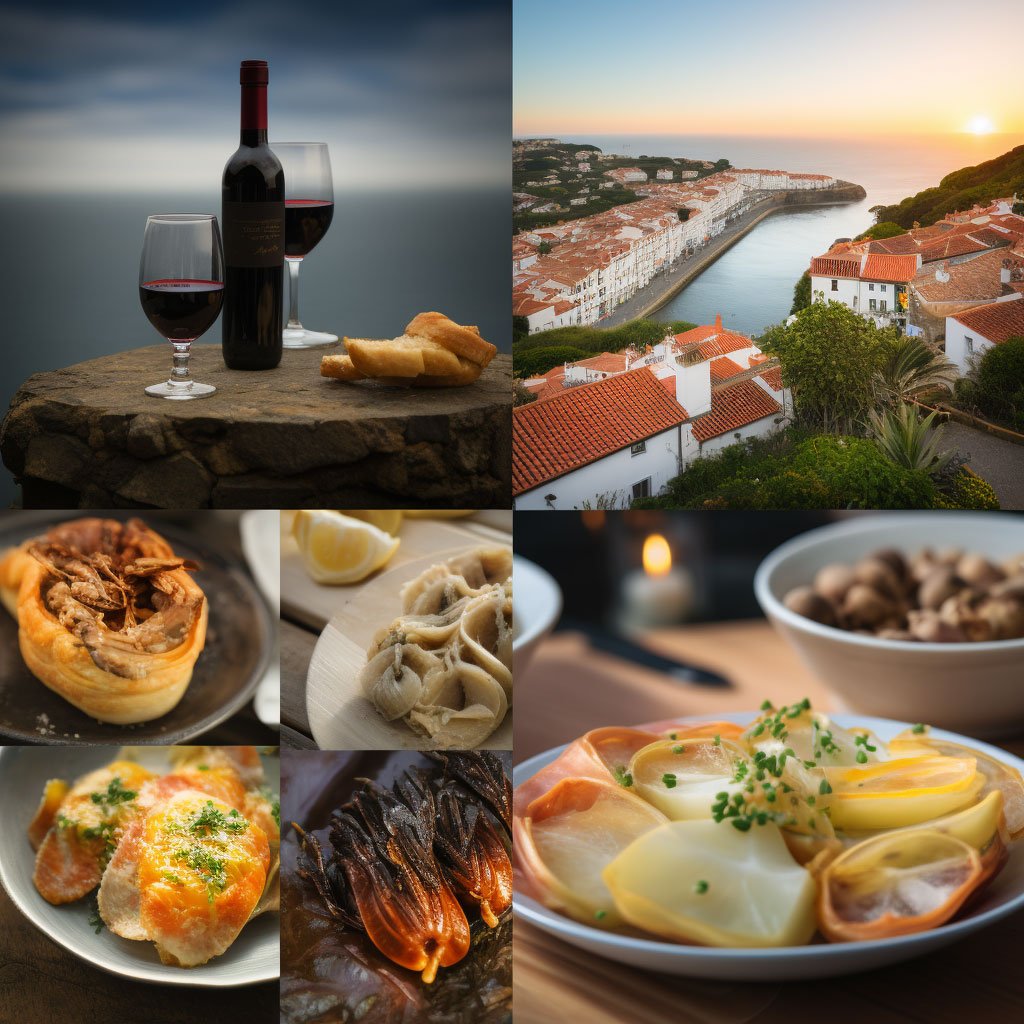Welcome, dear reader, to a culinary journey through Portugal. This beautiful country, known for its stunning landscapes and rich history, is also home to a diverse and delicious cuisine. From the sweet pastéis de nata to the savory bacalhau, each dish offers a unique taste of Portugal’s culinary heritage. In this journey, we’ll also explore vibrant food markets and renowned wine regions like Douro Valley and Alentejo. So, let’s embark on this gastronomic adventure and savor the flavors of Portugal.

Pastéis de Nata: A Sweet Start
Our culinary journey begins with a taste of Portugal’s most iconic pastry, the pastéis de nata. These delicious custard tarts, with their flaky crust and creamy filling, are a staple in Portuguese bakeries and cafes.
Originating from the Jerónimos Monastery in Lisbon, pastéis de nata have a history as rich as their taste. The monks at the monastery used egg whites to starch their clothes and utilized the leftover yolks to make pastries, including the now-famous pastéis de nata.

As we bite into a pastel de nata, we savor the contrast between the crisp pastry and the soft, sweet custard. The top is slightly caramelized, adding a hint of bitterness that perfectly balances the sweetness of the custard.
Bacalhau: Portugal’s Beloved Codfish
From the sweet delights of pastéis de nata, we journey into the savory world of bacalhau, a dish that holds a special place in the heart of Portuguese cuisine. Bacalhau, or codfish, is so beloved in Portugal that it’s often referred to as “fiel amigo” or “faithful friend”.

Bacalhau is traditionally prepared with salted and dried cod, a preservation method that dates back to the age of discovery. This process gives the fish a unique texture and flavor that is brought out in cooking.
There’s a saying in Portugal that there are more than 365 ways to cook bacalhau, one for each day of the year. From “bacalhau à brás”, a dish made with shredded cod, potatoes, and eggs, to “bacalhau com natas”, a creamy codfish casserole, each recipe offers a different taste experience.
As we sample these dishes, we appreciate the versatility of bacalhau and understand why it’s a staple in Portuguese cuisine. The flavors are robust and hearty, reflecting the country’s seafaring history and love for simple, satisfying meals.
Food Markets and Wine Regions: The Heart of Portugal’s Culinary Scene

Our culinary journey through Portugal brings us to the vibrant food markets and renowned wine regions that are at the heart of the country’s culinary scene.
As we explore the food markets, we are captivated by the array of fresh produce, artisanal cheeses, and locally cured meats. The Mercado da Ribeira in Lisbon, also known as Time Out Market, is a particular highlight. Here, under one roof, we find a variety of food stalls offering everything from traditional Portuguese dishes to innovative fusion cuisine.

Our journey then takes us to the rolling hills of the Douro Valley and Alentejo, two of Portugal’s most renowned wine regions. The Douro Valley, known for its terraced vineyards and the production of Port wine, offers stunning landscapes and rich, full-bodied wines. Alentejo, with its vast plains and cork oak forests, is known for its high-quality red and white wines.
As we sample the wines of these regions, we appreciate the diversity and complexity of Portuguese wines. From the sweet, fortified Port wine to the robust reds of Alentejo, each sip offers a taste of the land and the tradition that goes into making each bottle.
Conclusion: A Culinary Journey Through Portugal

Our culinary journey through Portugal has been a feast for the senses. From the sweet pastéis de nata to the savory bacalhau, from the bustling food markets to the tranquil wine regions, we have tasted the flavors of Portugal’s rich culinary heritage. It’s a journey that has enriched our understanding of this vibrant country and its delicious cuisine. So, let’s continue to explore and savor the culinary delights of Portugal.
